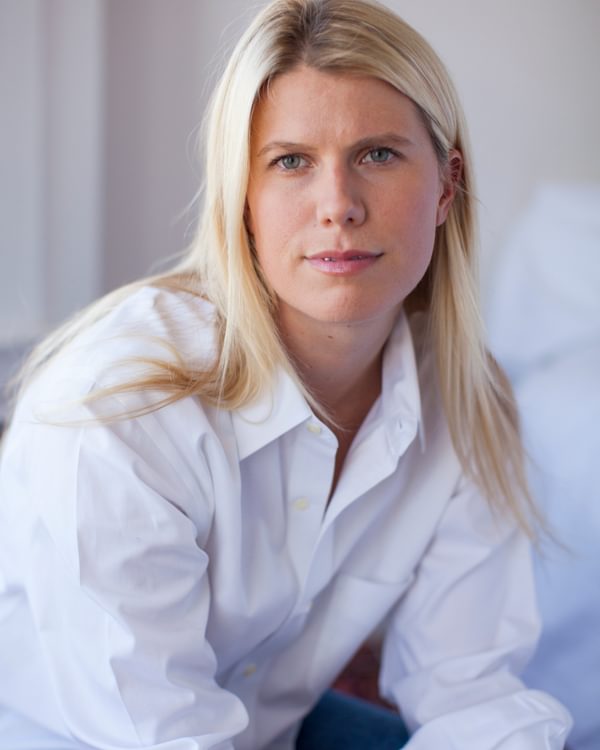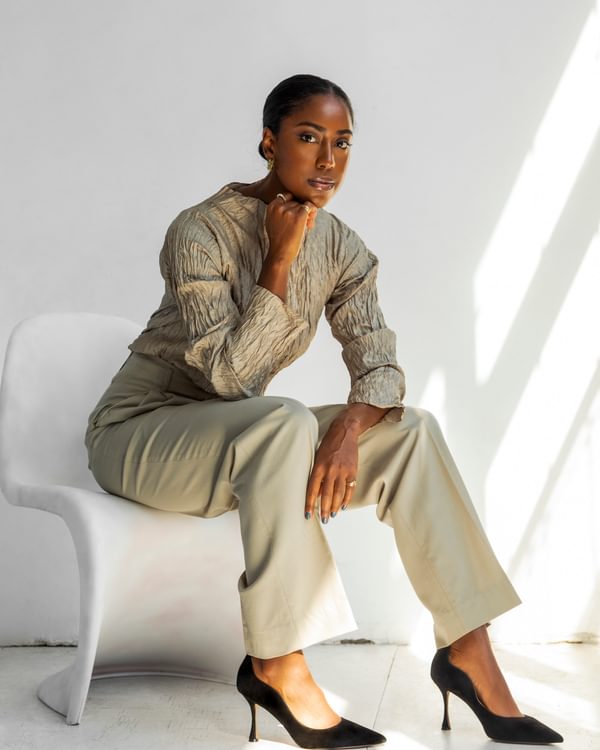October 04, 2023
Shaking up the art world
Recognizing that the art market was ripe for innovation, two alumnae helped build solutions to pay artists equitably.by CHRISTINE YU ’94
 Sarah Wendell Sherrill ’04
Sarah Wendell Sherrill ’04
Sarah Wendell Sherrill ’04 joined Christie’s, the famed British auction house, during the financial crisis of 2008. Not exactly great timing to enter the world of high-end art and luxury goods.
Still, Christie’s sold a Picasso for $106 million in 2010; it was the first painting to surpass $100 million.
“Despite the economy, art was becoming a major asset class, and I was lucky to have a front row seat,” says Wendell Sherrill, who rose to become one of the company’s youngest vice presidents and managed its Post-War & Contemporary Art department in New York. At the same time, she began noticing that artists and/or their estates often were not receiving a cut of the proceeds from sales.
 Charlie Jarvis ’15
Charlie Jarvis ’15
Charlie Jarvis ’15 had a similar “aha” moment. As an undergraduate at Stanford University, she met Max Kendrick, son of sculptor Mel Kendrick ’67. Max was trying to solve the problem of artist compensation, specifically around resale royalties. “I was shocked to realize that all of these works were going for millions of dollars and that the artist isn’t actually included from a financial perspective,” Jarvis says.
Wendell Sherrill and Jarvis both recognized that the art market was ripe for innovation. By leveraging new technology, the two alumnae have developed novel ownership models that not only pay artists equitably, but also preserve artists and creators as key stakeholders. Jarvis co-founded the art tech company Fairchain in 2019 with Max Kendrick. The company uses blockchain technology to establish and track authenticity and ownership of art and collectibles. It also gives artists the opportunity to build in the terms of commissions from future sales. It’s a relatively simple ownership infrastructure with an added layer of security and trust.
“I was shocked to realize that all of these works were going for millions of dollars,” says Jarvis, “and that the artist isn’t actually included from a financial perspective.”
“We realized there is a way to build a solution that benefits all members of the ecosystem, while also respecting the norms of the market,” Jarvis says. For collectors, it protects against fraud and disputes, an increasing problem in the global art world. For galleries, it offers more economic sustainability and helps with the administrative side of their operation.
Fairchain’s technology also allows more people to participate as collectors, particularly those new to the market and those who may not have the connections that are valued in a handshake industry like art.
Likewise, Wendell Sherrill is creating pathways for artists to retain ownership of their work. Today, artists and creators are becoming brands; they are connecting directly with consumers and using their intellectual property to extend the value of their work. It’s an exciting time.
“We believe artists are founders of some of the world’s most valuable assets,” Wendell Sherrill says. “Lobus is empowering them to be the true founders of the work they produce. One day, it will be as easy to buy a share of Hamilton as it is to buy a share of Apple.”
“In Silicon Valley, where I grew up, we hold the view that the artist is founder,” Wendell Sherrill says. “I start a company and capitalize it. I am not giving away 100 percent of my company.”
In 2018, Wendell Sherrill co-founded Lobus to bring cultural assets to market as a new type of alternative investment with the creator at the center. Lobus works with visual artists as well as musicians, filmmakers, and those who develop other creative content, helping them retain ownership and capitalize at scale.
“We believe artists are founders of some of the world’s most valuable assets,” Wendell Sherrill says. “Lobus is empowering them to be the true founders of the work they produce. One day, it will be as easy to buy a share of Hamilton as it is to buy a share of Apple.”
Christine Yu ’94 is an award-winning journalist who covers sports, science, and health and is the author of Up to Speed: The Groundbreaking Science of Women Athletes. Her writing has appeared in the Washington Post, Time, Outside, and other publications.
Other Stories

Nation’s oldest and most prestigious high school STEM competition awards top 300 high school scientists




